Soot Removal and Cleanup
Fire Damage at Your Home or Business? We Can Help!
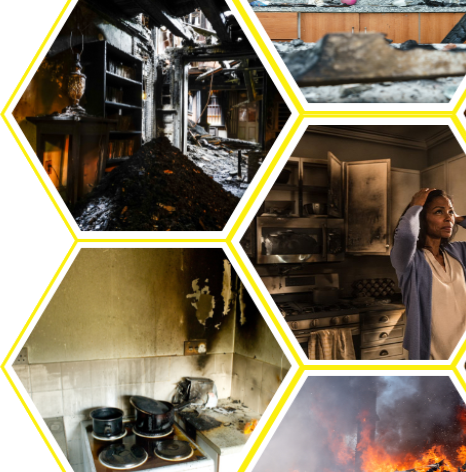
No matter what fire and soot damage situation you’re dealing with, we have solution.
Soot is a dangerous acidic byproduct of fire and smoke that can damage your property and trigger health effects. If your home or building is affected by soot, you need to take the following steps immediately:
- Safety first: Before you begin any cleanup, ensure your safety. Wear protective clothing, including gloves, eye protection, and a mask to prevent inhalation of soot particles. Also, make sure there are no remaining fire hazards in your home.
- Document the damage: Take photos and videos of all affected areas before you start cleaning. This documentation will be crucial when you file your insurance claim, as it provides evidence of the extent of the damage.
- Contact your insurance company: Notify your insurance company about the soot damage as soon as possible. Provide them with the documentation you’ve gathered. They’ll guide you on how to proceed with the claim and may recommend professional cleaners who specialize in soot and smoke damage.
- Professional cleaning: While small soot deposits can be cleaned using some household cleaning products, it’s usually best to hire professionals for larger affected areas. They have the appropriate equipment and expertise to clean thoroughly without causing more damage.
Soot Damage Cleaning from RestorationMaster
Soot is a dangerous and damaging substance that will spread throughout your property after a fire is out and settle on various surfaces and materials. It easily penetrates porous materials and furnishings and if it is not cleaned properly, the damage can quickly become permanent. The best thing you can do when soot damage affects your home is call a professional for soot damage cleaning.
RestorationMaster works with the top soot damage cleaning professionals in the industry, and we can put you in touch with a professional in your area. Call us at (888) 915-7197 to talk to a soot damage restoration professional.
Fire Soot – Who to Call?

Fire Soot Removal – What to Expect?

Choosing the Right Soot Cleaning Company – Why RestorationMaster?
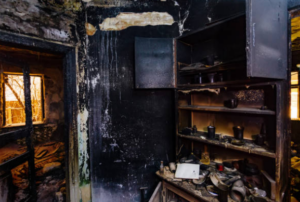
RestorationMaster has spent the past 11 years working with the top fire damage restoration experts of the industry who can provide effective soot damage cleanup.
Residential Soot Damage Cleanup

Soot can cause damage to porous building materials like wood and drywall as well as to furniture, drapes, fabrics, and other materials. Professionals that provide soot cleanup can effectively remove soot from the affected surfaces and materials in your home.
Commercial Soot Damage Cleanup
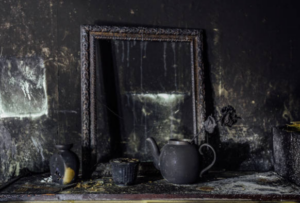
Soot can spread through a commercial building, causing damage to the affected areas, and increasing the risk of health effects from exposure. Professionals use the proper equipment and cleaning techniques to clean affected materials and restore safe conditions.
Emergency Soot Damage Restoration – Call (888) 915-7197
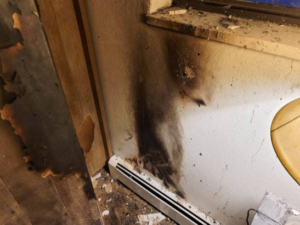
Contact a local fire and soot damage contractor in your area:
Soot Removal and Cleanup FAQs
Soot is a fine particulate substance that is the byproduct of incomplete combustion. It is a carbon containing material that is acidic in nature and it clings to surfaces like walls and ceilings as well as furnishings, fabrics, and other materials. Soot can cause tarnishing and etching to affected surfaces and materials and it needs to be cleaned up right away using the proper methods to prevent permanent damage. Improper cleaning will make the soot damage worse.
Soot is also dangerous for your health as it can be inhaled very easily. Inhaling soot can cause coughing, shortness of breath, and lung irritation and worsen conditions like heart issues and asthma.
Soot is a black residue that consists of microscopic particles that are smaller than dust particles. When the soot particles gather on a surface or materials, they can cause serious damage. The following are the main signs of soot damage on your property:
• Black residue: The most obvious sign of soot damage is a black, powdery, or flaky residue. This can be found on walls, ceilings, or other surfaces in your home.
• Unpleasant odors: Soot can leave a strong, unpleasant odor that can linger for a long time if not properly cleaned. It may smell like smoke, burnt materials, or a general acrid scent.
• Stained fabrics: Carpets, curtains, upholstery, and other fabrics may become stained from soot. These stains can be tough to remove and may require professional cleaning.
• Discolored walls and ceilings: Over time, soot can cause discoloration on your walls and ceilings, turning them yellow or brown. Soot damaged walls can quickly become permanently damaged.
• Corroded metal: Prolonged exposure to soot can lead to corrosion, especially on metal surfaces.
• Poor air quality: If you find yourself coughing, wheezing, or experiencing other respiratory issues, it may be due to soot particles in the air affecting the indoor air quality.
Soot damage will only spread and get worse if you do not have it cleaned up right away, increasing the risk of permanent damage. Call RestorationMaster at (888) 915-7197 to get a professional to your soot damaged house for cleaning and restoration.
• Fires
• Excessive candle usage
• Defective fireplaces
• Defective furnaces
• Smoking cigarettes or cigars
• Cooking and grilling
• Burning materials like wood, paper, and coal
Regardless of the source of the soot, it needs to be cleaned up immediately to prevent widespread, permanent damage. Call RestorationMaster at (888) 915-7197 to find a soot damage cleanup specialist in your area.
Soot removal and cleaning services involve the removal of soot particles from affected surfaces and materials as well as from the air spaces. It is important for the cleaning and restoration process to begin quickly as the soot will spread further throughout your property until it is removed and the damage it caused to the affected surfaces and materials will get worse the longer it is not cleaned.
The soot damage cleaning process includes the following steps:
• Assessment of the spread of the soot and the resulting damage
• Pre-cleaning to prevent permanent damage of sensitive materials
• Complete cleaning of affected surfaces and materials using the proper cleaning products and techniques
• Cleaning of personal items and fabrics
• HEPA vacuuming to remove soot particles from the air
If you notice soot damage within your property, you need to act right away to prevent it from spreading further and settling in. RestorationMaster can put you in touch with a professional in your area that provides soot removal and cleaning.
In cases where soot has only affected a small area, the soot removal cost may be between $400 and $700. If the soot has affected a wide range of materials that need to be cleaned, including walls, carpeting, upholstery, and other fabrics, the cost of cleaning may be between $2000 and $6000.
For the most part, homeowner’s insurance will cover soot damage as this is considered damage caused by fire which is generally covered. You should check your insurance policy to ensure that you will be covered for soot damage cleaning.
• Carefully remove large chunks of soot by picking them up with a spoon or knife and putting them in the garbage. Be careful not to crush the chunks of soot.
• Sprinkle baking soda or corn starch on the soot-stained areas. Apply liberally to completely cover the area and leave it sit for a couple of hours or even overnight to absorb the soot.
• Vacuum the corn starch or baking soda from the carpet. The cleaner you used should have bound to the soot which will make it easier to vacuum up. Start by using the nozzle attachment to get as much of the baking soda or corn starch as possible and then use the brush head on the high setting to finish the job.
• If the stain is still present, you can use rubbing alcohol or hydrogen peroxide to treat the stain. Soak a cloth with one tablespoon of rubbing alcohol, or one tablespoon of hydrogen peroxide mixed with three tablespoons of water and blot the stain. Do not rub the stain because this could push the soot deeper into the carpet.
• Blot the stain with warm water to remove the rubbing alcohol or hydrogen peroxide. This should remove the stain as well.
• Leave your carpet to dry. Open doors and windows to improve the ventilation to help it dry completely.
Soot can penetrate common ceiling materials like wood and drywall which can lead to significant damage. If you have soot on your ceiling, following these steps will help you remove it:
• Wear protective gear, including gloves, long sleeves, pants, and a facemask, to prevent the soot from touching your skin or getting into your lungs.
• Turn off your HVAC system and ventilate the areas by opening windows and using fans.
• Cover up furniture and other belongings in the areas as well as the floor.
• Vacuum soot off of the ceiling by using the nozzle. Make sure you hold the nozzle half an inch away from the ceiling and avoid touching the surface or you could smear the soot.
• Use a soot sponge to wipe away the stains. Make sure you wipe with broad strokes and do not scrub the ceiling, or you can make the soot damage worse. Do not wet the soot sponge either or it will not clean the soot.
• Use dish soap to remove residual stains after wiping off the soot.
• Rinse the area with clean water to remove the residual soot and dish soap and use a towel to pat the area dry.
• Carefully dispose of the covers you put over your belongings and the floor to avoid spreading any soot that may have fallen on them.
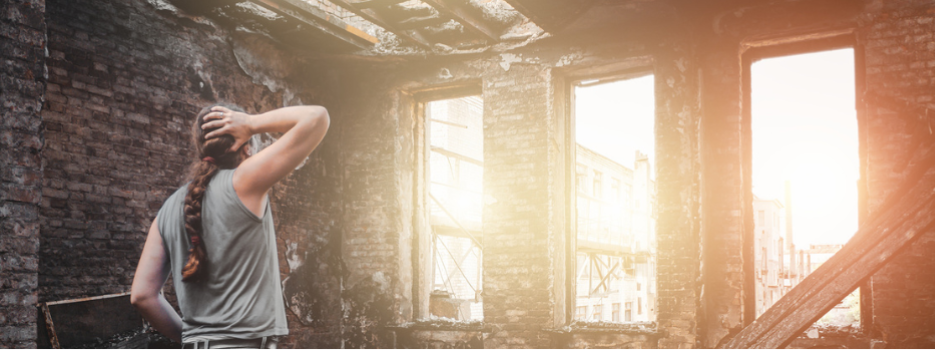
Related Posts
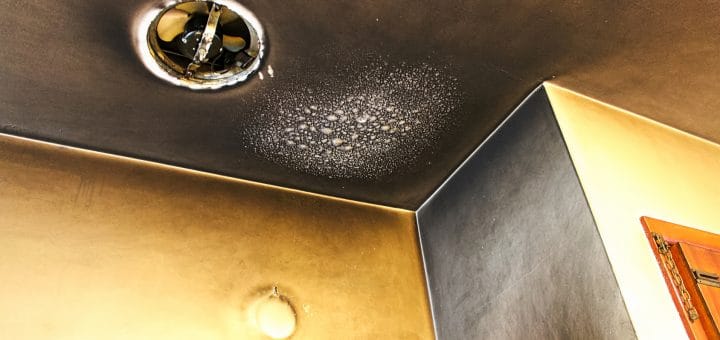
Types of Damage Caused by Smoke and Soot
Apart from the damaging effects of smoke and soot in your home, these byproducts can also affect your physical health. Smoke and soot inhalation can contribute to severe negative health effects, including coughing, watery eyes, and even lung cancer.
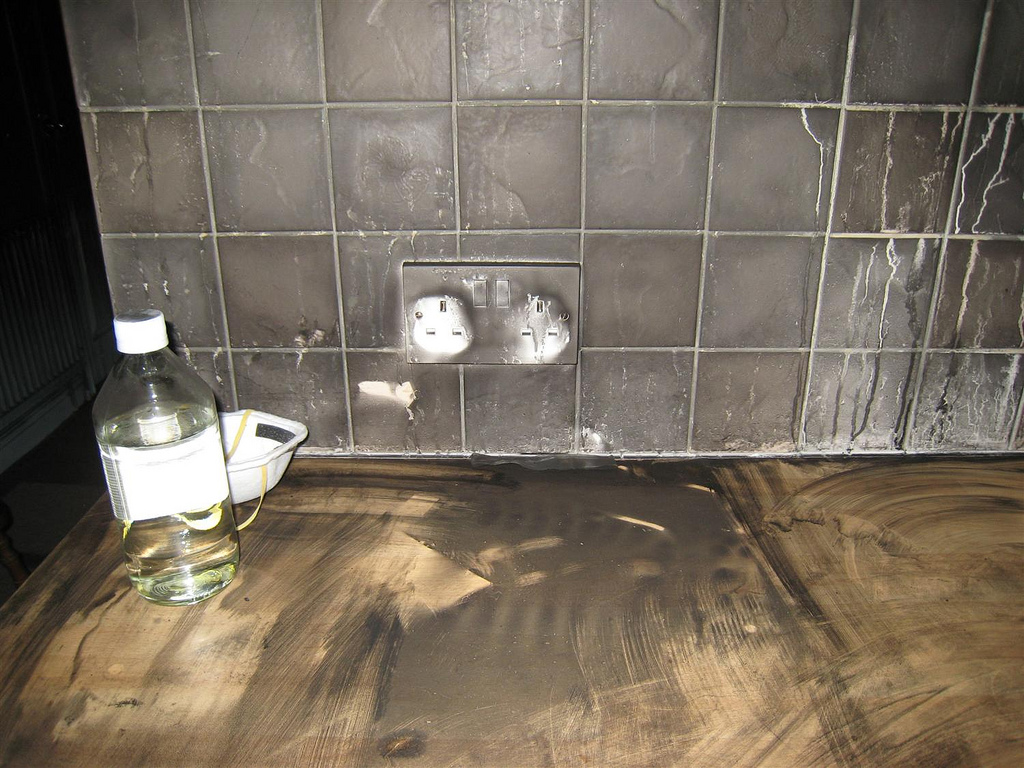
How Do I Clean Soot and Ash from Wildfires?
Immediate action is imperative to prevent fire damage from causing further harm. If your home or building has been affected by the soot and smoke of a wildfire, then use the following tips to help clean the soot, ash, and smoke damage.

How to Restore Electronics from Soot and Smoke Damage
Electronics are expensive investments. Use the following guide to learn more about electronics harmed by smoke and soot, what to do with your damaged electronics, and how to restore your electronics following smoke and soot damage.
